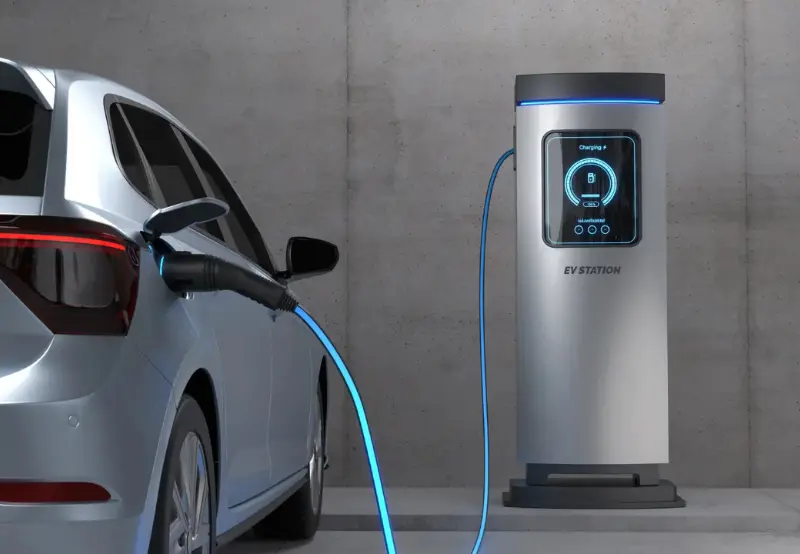Global EV Sales Growth surged by 28% in 2025. Explore top regions, driving factors, policy impact, and what this electric vehicle boom means for the planet. The Electric Surge Has Arrived
Global EV Sales Growth continues its electrifying ascent in 2025, marking a 28% year-on-year increase in the first five months of the year. Approximately 7.2 million electric vehicles (EVs) were sold globally between January and May, up from 5.6 million during the same period in 2024. This remarkable jump illustrates a growing global commitment to sustainable transportation, tighter emissions policies, and consumer demand for cleaner, cost-efficient alternatives to petrol and diesel vehicles.
Let’s explore which countries are leading this charge, what’s fuelling the EV boom, the roadblocks ahead, and what it all means for the future of mobility.
🌍 Regional Trends: Where EV Sales Are Acceleration
China: Unstoppable Momentum
China remains the undisputed global leader in electric mobility, with over 4.4 million EVs sold from January to May 2025—a staggering 33% increase compared to the same period in 2024. Notably, May 2025 alone recorded over 1 million EV sales, setting a new monthly record for the country.
What’s driving this success? Aggressive domestic policies, purchase incentives, infrastructure expansion, and a strong lineup of homegrown automakers like BYD, XPeng, and NIO. The affordability of Chinese EVs is particularly appealing—two-thirds of EVs in China now cost less than ICE vehicles, even without subsidies.
BYD’s expansion into international markets, especially Europe, is another game-changer. Their Dolphin Surf hatchback, priced competitively at around $25,000 (INR 20.8 lakh approx.), is already gaining traction in overseas markets.
Europe: Consistent Climb Amid Incentives
Europe isn’t far behind. EV sales grew 27%, hitting 1.6 million units in the first five months of 2025. Several key markets demonstrated significant progress:
- 🇪🇸 Spain: +72%
- 🇮🇹 Italy: +58%
- 🇩🇪 Germany: +45%
- 🇬🇧 United Kingdom: +32%
Europe’s success can be attributed to a mix of tax rebates, low-emission zones, CO₂ emission caps, and expanding charging infrastructure. Germany, for example, introduced additional tax benefits for fleet owners in early 2025, encouraging corporate EV adoption.
North America: Growth, But Slower
In contrast, North American growth has been more modest at 3%, with 700,000 EVs sold in Jan–May 2025. The United States saw a 4% year-to-date rise, thanks largely to federal tax credits. However, those credits are set to expire by the end of 2026 unless renewed, creating uncertainty.
Canada experienced a noticeable drop in sales—about 20%—after pausing several EV subsidies earlier this year. This demonstrates just how dependent EV growth is on sustained government backing.
Rest of the World: Promising Progress
The rest of the world, including countries in Southeast Asia, Latin America, and Africa, reported 36% growth, selling 600,000 EVs YTD. While the volumes are still lower than in established markets, the growth percentage signals rising EV interest in developing economies.
🔑 What’s Driving Global EV Sales Growth
1. Stronger Government Support
- China introduced newer trade-in subsidies and extended purchase benefits.
- Europe is pushing toward its 2035 ICE vehicle ban with aggressive tax incentives.
- India continues expanding FAME-II subsidies and state EV policies.
- United States is leveraging its Inflation Reduction Act to offer up to $7,500 in credits.
2. Increased Model Variety and Affordability
Across regions, the number of EV models has grown substantially. More affordable vehicles are entering the market, such as the Tata Punch EV in India and BYD Dolphin globally. This variety makes EVs more accessible to a broader income demographic.
3. Better Charging Infrastructure
Worldwide, public EV charging networks are expanding. China leads with over 2 million public chargers, followed by Europe and the US. Fast-charging capabilities have also improved, reducing the typical range anxiety associated with EV ownership.
4. Falling Battery Prices
Battery prices continue to decline due to scale, improved chemistry, and diversified supply chains. According to BloombergNEF, lithium-ion battery prices have fallen by 15% year-over-year, making EVs increasingly competitive against internal combustion engines.
🌐 Forecast: What Lies Ahead?
The International Energy Agency (IEA) predicts that EVs will make up 25–30% of all new car sales by the end of 2025. This surge could displace over 1.3 million barrels of oil per day, further decarbonising transport and curbing global emissions.
Looking ahead, analysts anticipate that 2025 might see over 20 million EVs sold globally, up from 14.2 million in 2024. Most of this growth will come from China, followed by Europe, India, and emerging markets.
🚧 Key Challenges to Address
1. Policy Uncertainty
As seen in Canada, removing subsidies too soon can cause the market to contract. Long-term policies are crucial to ensure stable growth.
2. Tariffs and Trade Wars
Rising trade tensions between China, the EU, and the US may result in higher EV prices. For example, the EU is currently considering tariffs on low-cost Chinese EVs, which could affect market competitiveness.
3. Charging Infrastructure Disparity
While urban areas in Europe and China are well-equipped, rural zones and many developing nations still lack adequate infrastructure. Investment in universal access is essential.
4. Supply Chain Risks
Shortages of lithium, cobalt, and rare earth metals could hinder production unless recycling and alternative materials scale up quickly.
📊 Quick Recap: EV Sales by Region (Jan–May 2025)
| Region | Units Sold | Growth % |
|---|---|---|
| China | 4.4M | +33% |
| Europe | 1.6M | +27% |
| North America | 0.7M | +3% |
| Rest of World | 0.6M | +36% |
| Global Total | 7.2M | +28% |
🌟 Final Word: The Road to Electrification
Global EV Sales Growth in 2025 is a beacon of progress in our collective shift toward clean mobility. While the path ahead includes policy hurdles, infrastructure gaps, and geopolitical risks, the upward trend is undeniable.
Governments, automakers, and consumers alike are driving this transition. As technology matures and costs decline, electric vehicles are no longer a future concept—they’re the present reality, reshaping transport worldwide.





